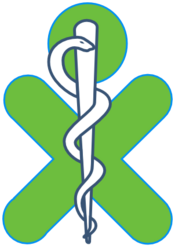WV VistA Software Packages
Porting VistA to the OLPC. For introduction to VistA components see VistA Monograph Wiki.
VistA Software Packages
Health Data Systems
The Health Data Repository (HDR) is the cornerstone of the Health Data Systems (HDS) portfolio. The HDR will serve as an operational clinical repository-a collection of clinical information, from VA and non-VA sources, residing on one or more independent platforms-to be used by clinicians and other personnel to facilitate longitudinal, patient-centric care. Data in the HDR will be organized in a format supporting the delivery of care regardless of the physical location of a patient's clinical information. The HDR will provide additional significant benefits including providing information to support research and population analyses, facilitating patient access to data and sharing information across VHA, improving data quality and data security, and reducing the burden on local VistA systems.
Automated Medical Information Exchange (AMIE)
Overview
The Automated Medical Information Exchange (AMIE) module facilitates the electronic interchange of veteran information between Veteran Benefits Administration (VBA) Regional Offices (ROs) and VA medical facilities. The comprehensive module provides an accurate audit trail to track most requests for information.
The module is composed of two components: Facility administrative options and VBA Regional Office options. Each area has individual items to maintain daily, and its own reports to print. RO staff access VA medical facility computers through VA national telecommunications network, and exercise their options on each local medical facility's system as necessary.
Features
- Provides access to local databases for identification of a veteran's admission, discharge, outpatient treatment, patient care, and other information that may require adjudicative actions.
- Reduces overpayments previously caused by lost, misrouted, or improperly processed admission notifications.
- Provides on-line status determinations of pending compensation and pension examinations (requesting, scheduling, tracking, and updating results).
- Provides RO on-line access to the local databases for the confirmation of the propriety of payments based on hospitalization.
- Improves timeliness of the RO benefits adjustment processing.
- Allows medical centers to electronically access sections of the Physicians Guide for Disability Evaluation Examinations.
- Provides tracking of insufficiently completed compensation and pension examinations.
